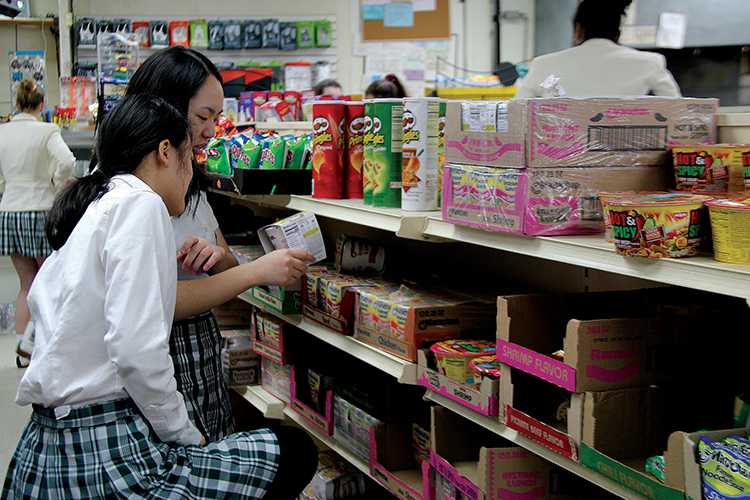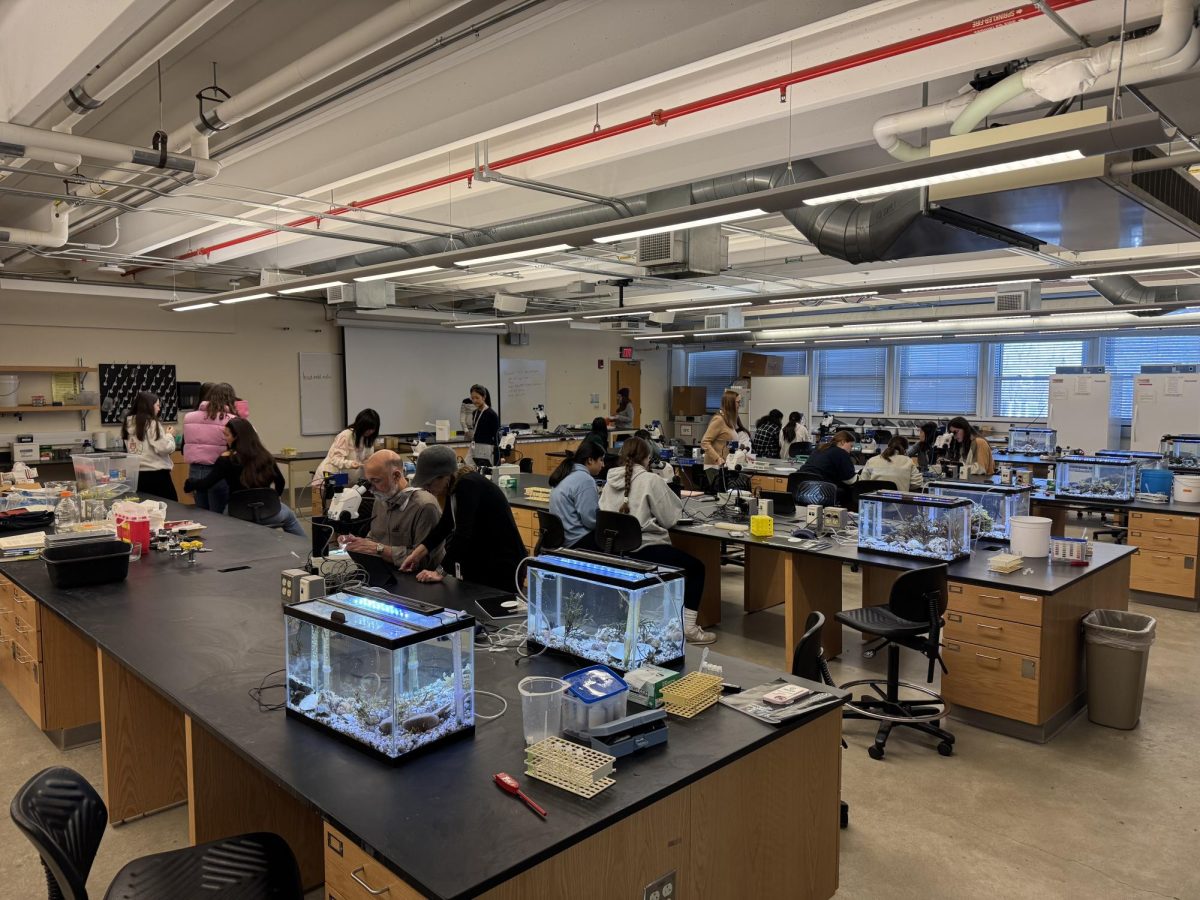In the Bonton neighborhood of South Dallas, it can take an hour and a half on public transportation to get to the nearest grocery store. As a result, the neighborhood often relies on the nearby corner store that lacks the necessities for healthy nutrition.
AP Environmental Science and AP Human Geography are reaching beyond their classrooms to improve lives in the Bonton food desert. Hoping to take what they’ve learned in class and positively impact Bonton’s residents, students are creating a proposal for a healthy and fresh grocery store in the neighborhood. They hope to eventually present their plan to the Dallas City Council with the goal of receiving a grant.
Although Bonton Farms, an urban farm, market and community center, has succeeded in refining the community and providing fresh food, there are still food and items that people cannot buy at the farm.
In these Social Impact classes, students are focusing on food security and what that looks like on both a local and a worldwide scale. Both AP Enviro and AP Human Geo took a field trip to Bonton to visit the local community center, TR Hoover Center, a corner store and Bonton Farms.
“We went to a grocery store, and they seemed to only have packaged foods,” Angie Walsh, AP Human Geo student, said. ‘It was similar to a 7-Eleven convenience store, and that was the only grocery store for the whole neighborhood.”
Something really resonated with the classes when the director of TR Hoover, Sherri Mixon, talked about the malnutrition of the neighborhood kids, the lower life expectancy and the high rates of Type 2 Diabetes in Bonton.
Upper School science teacher Kirsten Lindsay-Hudak, who teaches both AP Enviro and AP Human Geo, did not assign the project, but simply proposed the idea to her two classes.
“They made a real connection with Ms. Sherri,” Lindsay-Hudak said. “All I did was throw it out there, and say ‘if you really want to make a difference, it might be through a grocery store.’ And then they took it and ran with it.”
To begin the process, the classes dedicated time to brainstorm, proposing ideas from locations to recipes in the grocery store.
“The brainstorming process is thinking about anything that you need when you’re thinking about organizing a grocery store,” Lily Forbes, AP Enviro student, said. “We are forming teams within our class like human outreach and corporate connections.”
AP Enviro has been focusing on how to cultivate food and on the lack of access to healthy food, and the grocery store addresses the food desert problem in the neighborhood as well as providing an opportunity to educate people about nutrition. AP Human Geography helped brainstorm, yet has now changed its project and is now creating a plan to develop urban farms in downtown Dallas, also a food desert. Their individual contributions will combine in the proposal.
Through the brainstorming process, the classes are learning about how business works. They are making business plans, understanding the complex nature of zoning (the process of dividing land) and learning how to get people to invest in something that will not be profitable at first.
As of March 19, 2019, the City of Dallas Office of Economic Development set aside $250,000 to address the problem. Anyone who develops a valid solution to the food desert could be granted up to $70,000. The class plans to apply for the grant when the proposal is complete.
“We are trying to make it so this neighborhood can serve as an example of lower socioeconomic classes having access and being able to rise above and actually being able to feed themselves,” Forbes said.
Next, the classes submitted an action plan based on their brainstorming, which will establish the timeline for the project. Action steps will include determining a potential location and collecting data from the demographics of the neighborhood. Based on the action steps that the classes indicated, Lindsay-Hudak will determine benchmarks throughout the remainder of the year to ensure that the class stays on course.
Another important part of the project that has not yet begun is human outreach and community connection. Lindsay-Hudak requires the students to incorporate an education component to teach the community about nutrition. Mixon will play an important role in fostering the connection between the classes and the Bonton community.
“A big part of the project is a big family thing,” Walsh said. “Ms. Sherri doesn’t want it to be another project where the residents aren’t included and people just come in and do what they think is best. She wants it to be us as a class, us as a family, helping their family.”
The hope is for the project to succeed by the end of the year, but if it is unfinished, the classes plan to hand off all their hard work to TR Hoover. From there, the community can decide if and how they wish to continue the project.
“When people talk about pie in the sky ideas, this is one of those things,” Lindsay-Hudak said. “Although, it may be just crazy enough to work.”
Lindsay-Hudak explained that the project is nontraditional in a school setting in that it simulates real life; no one knows how it is going to turn out.
“The girls are seeing places where there are needs, and they are getting excited and feeling like they can make a difference. And they can,” Lindsay-Hudak said. “It is empowering for a student. This is our mission 100 percent; these are women who are leading lives of purpose.”
Story by Kate Clark
Photo by Meg Wilson



